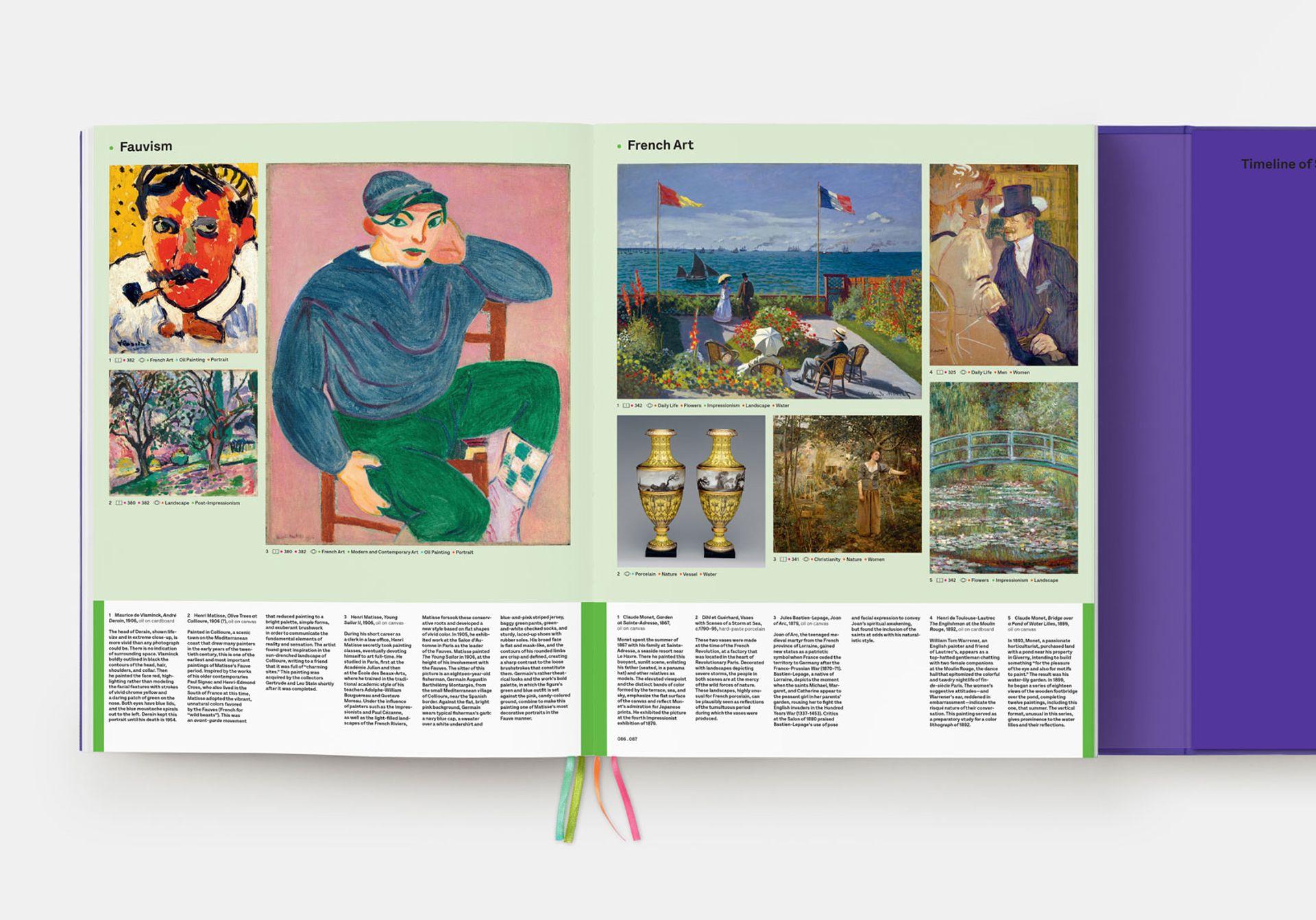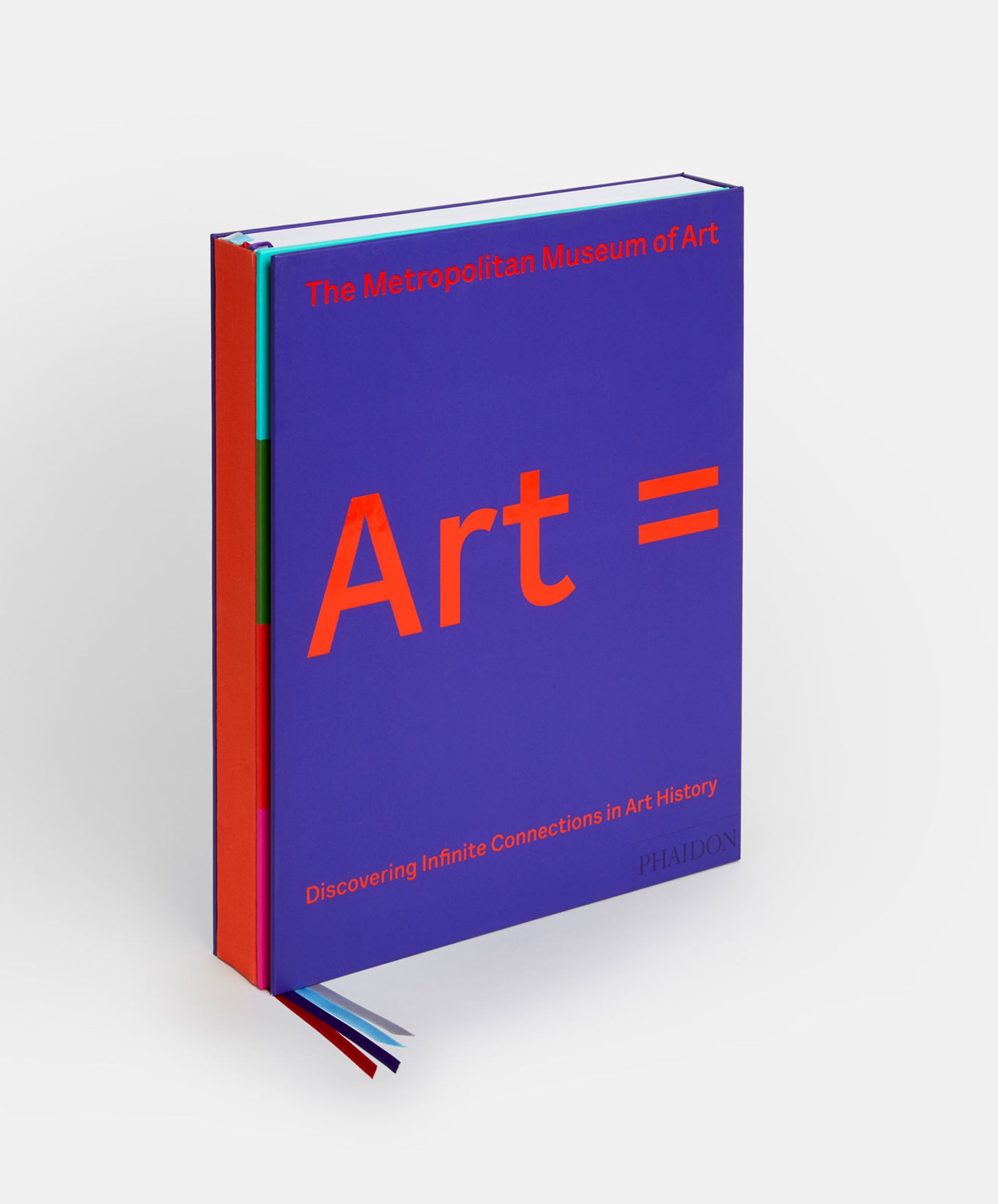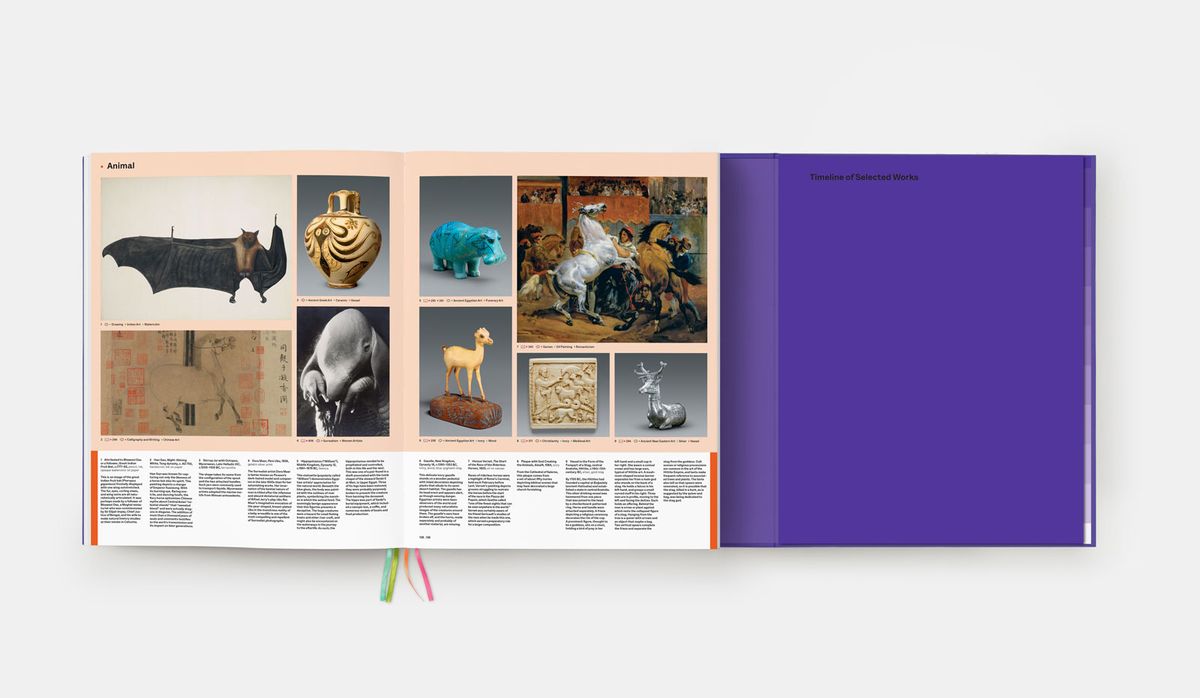If you cannot get to the Metropolitan Museum of Art, which reopened last week after five months in lockdown, then a new publication Art=: Discovering Infinite Connections in Art History could well be a replacement for any visit to New York’s hallowed art mecca, which celebrates its 150th anniversary this year.
This thumping new volume promises to “celebrate 6,000 years of art history through the lens of the Met’s vast and unsurpassed collection”, providing a radical, even unconventional way of sampling the museum’s unrivalled holdings. Engaging fully with the book means cross-referencing different sections across 448 pages—but is it worth the effort?
How it works
A good starting point is the pull-out wall chart included with the publication which tracks all of the objects chronologically from 6,000 BC to the present day, dividing the artefacts according to geographical areas such as the Middle East and Africa. This timeline is modelled on the Met’s renowned Heilbrunn Timeline, which was launched 20 years ago. This sweep across history, linking thousands of works from across the museum’s 17 curatorial departments to detailed thematic essays online, forms the basis of the new publication. (The works presented in Art= derive from data linked to the most viewed pages of the Heilbrunn Timeline).
Readers are then encouraged to dive into the first three chapters of thematic groupings: “Material/Technique”, “Period/Place/Style” and “Object/Subject”, which are organised alphabetically. More than 850 objects are presented across these three chapters, giving snapshots of key works. Look up an object and you will notice a series of symbols, guiding you to other thematic sections or towards a series of essays—160 in total—written by staff specialists encompassing the museum’s curatorial areas, from European Painting to Islamic Art
The idea is to keep cross-referencing and find new connections—according to the introduction “this multifaceted organisation creates exciting and unexpected juxtapositions unlikely to be found in traditional surveys of art history”.

Henri de Toulouse-Lautrec's The Englishman at the Moulin Rouge (1892) © Met
Example
-head to French Art in “Period/Place/Style”.
-select Henri Toulouse-Lautrec, The Englishman at the Moulin Rouge (1892); read the brief entry which describes how “the women’s suggestive attitudes—and [William Tom] Warrener’s ear, reddened in embarrassment—indicate the risqué nature of their conversation.”
-look at the accompanying symbols that guide you to the essay “Lithography in the Nineteenth Century”.
-or follow another symbol and head instead to the related thematic sections, “Daily Life”, “Men” and “Women” (all in the“Object/Subject” section).

A spread from the Art= book showing Fauvism and French Art
Does it work?
The key is not to be overwhelmed. Readers can decide for themselves if they want to dip into the thematic sections as a starting point, and then peruse the essays, nestled in the back of the book, which are clear and clever. The aim is to join the dots between objects, primarily through the 150 themes presented in the thematic groupings, seeing how artists across millennia turn to common themes, sensibilities and techniques (the specialist essays can be read as stand-alone analyses).
Think of this as a three-stage process—hone in on an object in the thematic sections; then skip across to another thematic section as suggested; finally, alight on the specialist essay linked to the object. Confused? It can be rather laboured at times but the rewards are obvious. “The intent of these pages is not to present a complete picture, scholarly definition or comprehensive chronology of the history of art, but to leave it up to readers to determine what art means to them,” according to the book’s introduction.
This sounds like having your cake (art historically) and eating it whatever way you like which is refreshing on one hand and slightly exhausting on the other. In the digital age, it is worth pointing out also that a publication of this length and depth—which takes a considerable amount of time to navigate with its colour-coded sections and bookmark ribbons—is proof that print products can still be big, bold and interesting.

Art=: Discovering Infinite Connections in Art History
• Art=: Discovering Infinite Connections in Art History, edited by Gwen Roginsky, Rachel High, Rebbecca Morrill and Diane Fortenberry, Phaidon, 448pp, £59.95 (hb)



